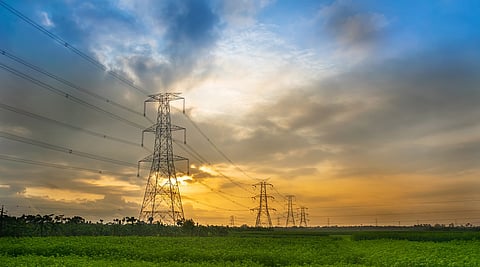

The International Energy Agency (IEA) has warned that global energy security is facing its broadest test in decades, as mounting risks stretch across fuels, technologies and supply chains. In its flagship World Energy Outlook 2025 (WEO-2025), released on November 11, the agency calls for urgent diversification and cooperation to navigate an increasingly turbulent energy landscape.
Countries are now contending with a web of short-term shocks and long-term vulnerabilities that extend well beyond oil and gas, the IEA said. “When we look at the history of the energy world in recent decades, there is no other time when energy security tensions have applied to so many fuels and technologies at once — a situation that calls for the same spirit and focus that governments showed when they created the IEA after the 1973 oil shock,” said Executive Director Fatih Birol.
The WEO-2025 frames this moment as a turning point — the arrival of what Birol calls the “Age of Electricity”. Electricity demand is growing much faster than overall energy use in every scenario the IEA analysed. Power now accounts for around 20 per cent of total final energy use yet serves over 40 per cent of the global economy. “Last year, we said the world was moving quickly into the Age of Electricity — and it’s clear today that it has already arrived,” Birol noted.
In an unusual twist, the IEA finds that surging electricity demand is no longer led only by emerging markets but also by advanced economies, driven by data centres and artificial intelligence. Global investment in data centres is set to hit $580 billion in 2025, overtaking the $540 billion being spent on global oil supply. “Those who say that ‘data is the new oil’ will note that this surpasses the spending on oil — a striking example of the changing nature of modern economies,” Birol said.
Beyond fossil fuels, the IEA identifies critical minerals as the new fault line for global energy security. A single country dominates refining for 19 of 20 strategic energy-related minerals — with an average market share of 70 per cent. These minerals underpin not only batteries and solar panels, but also AI chips, defence systems and jet engines. “Reversing this concentration will be slow,” the report warns, urging “stronger government action to foster more diverse and resilient supply chains.”
The report notes that vulnerabilities in mineral supply chains are being compounded by new export controls and geopolitical tensions, with more than half of strategic minerals now subject to trade restrictions.
The WEO-2025 projects that emerging economies — led by India and Southeast Asia — will shape global energy trends in the coming decade, taking the baton from China, which drove over half the growth in oil and gas demand since 2010. By 2035, about 80 per cent of global energy consumption growth will come from regions with high solar potential, underscoring the rapid spread of solar technologies.
Renewables, led by solar PV, continue to expand faster than any other energy source in all scenarios, while nuclear energy is also “making a comeback”. Global nuclear power capacity is set to rise by at least one-third by 2035, including through small modular reactors (SMRs), with major interest coming from data centre operators seeking reliable low-carbon power.
In contrast, the IEA expects ample oil and gas supply in the near term, with prices steady around $60-65 a barrel, as new LNG projects boost global capacity by 50 per cent by 2030. But it cautions against complacency, warning that both markets “remain exposed to geopolitical risks” and that weaker climate policies could erode today’s supply buffers.
Despite technological advances, the world is falling short on two fronts: universal energy access and climate goals. Around 730 million people still live without electricity and nearly two billion rely on polluting cooking fuels. The IEA’s new scenario charts a path to universal access to electricity by 2035 and clean cooking by 2040, with LPG playing a leading role.
Climate progress is also lagging. The report says global warming will exceed 1.5°C in all scenarios, even those with rapid emissions cuts, though the world can still avoid “the worst outcomes” if it achieves net zero by mid-century.
“The World Energy Outlook’s scenarios illustrate the key decision points that lie ahead and, together, provide a framework for evidence-based, data-driven discussion over the way forward,” Birol said.